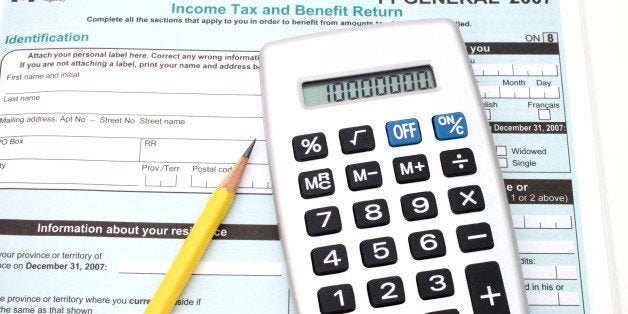
Taxes and health insurance go hand-in-hand this year. This tax season marks the first year individuals and families will be required to provide information regarding their health insurance on their tax returns. Why? The Affordable Care Act (ACA) mandates that (almost) all citizens be covered or they will be faced with a penalty when they file their taxes.
Tax Day, which falls on April 15, is just around the corner, and if you find yourself among the masses of last-minute filers, here are four tips that will help you maximize your health care savings.
1. Sign up for health care.
Yes, that's right. The health care enrollment deadline may have passed, but there is an exception. Because this is the first year that those without insurance will be penalized on their taxes, the government is offering an extra open enrollment period.
This period, which started on March 15 and lasts until April 30, provides to people who were not covered in 2014 and did not sign up in 2015 the opportunity to obtain coverage, and ultimately, avoid the penalty when they fill out their 2015 tax returns in 2016.
The fee for not having coverage in 2014 is the greater of $95 or 1 percent of the person's income up to the national average cost of a bronze plan, about $2,448. In 2015, those numbers go up to the greater of $325 or 2 percent of income up to the national average cost of a bronze plan. These penalties are even more for those with families.
2. Check for exemptions.
Even if you didn't have health insurance in 2014, you may be saved from paying the penalty. That is, if you qualify for an exemption, such as financial hardship, income below the federal tax filing threshold, unaffordable medical expenses or religious group membership, such as Medi-Share. A full list of all possible exemptions can be found at healthcare.gov.
3. Deduct your medical expenses.
If your medical expenses accounted for more than 10 percent of your income last year, you may be able to deduct them from your taxes.
Medical expenses that are deductible include preventive care, treatment, surgeries and dental and vision care. Prescription medications, glasses contacts, false teeth and hearing aids also qualify.
Note that in order to claim a deduction, you must itemize. In other words, you cannot use the standard deduction. You should generally only do this if your itemized deductions are greater than your standard deduction.
4. Fund your Health Savings Account (HSA).
HSAs provide a triple tax-advantaged bank account. Money goes in tax-free, grows tax-free and can be spent tax-free.
The maximum contributions for 2014 were $3,300 for individuals and $6,550 for families, with an extra $1,000 in "catch-up" contributions for those 55 and older. If you have not yet done so, you have until April 15 to maximize your contributions for an additional tax deduction.
Knowledge of these cost-saving rules will help you not only navigate the confusing health care system more effectively, but will also make you a better steward of your resources at tax time.
